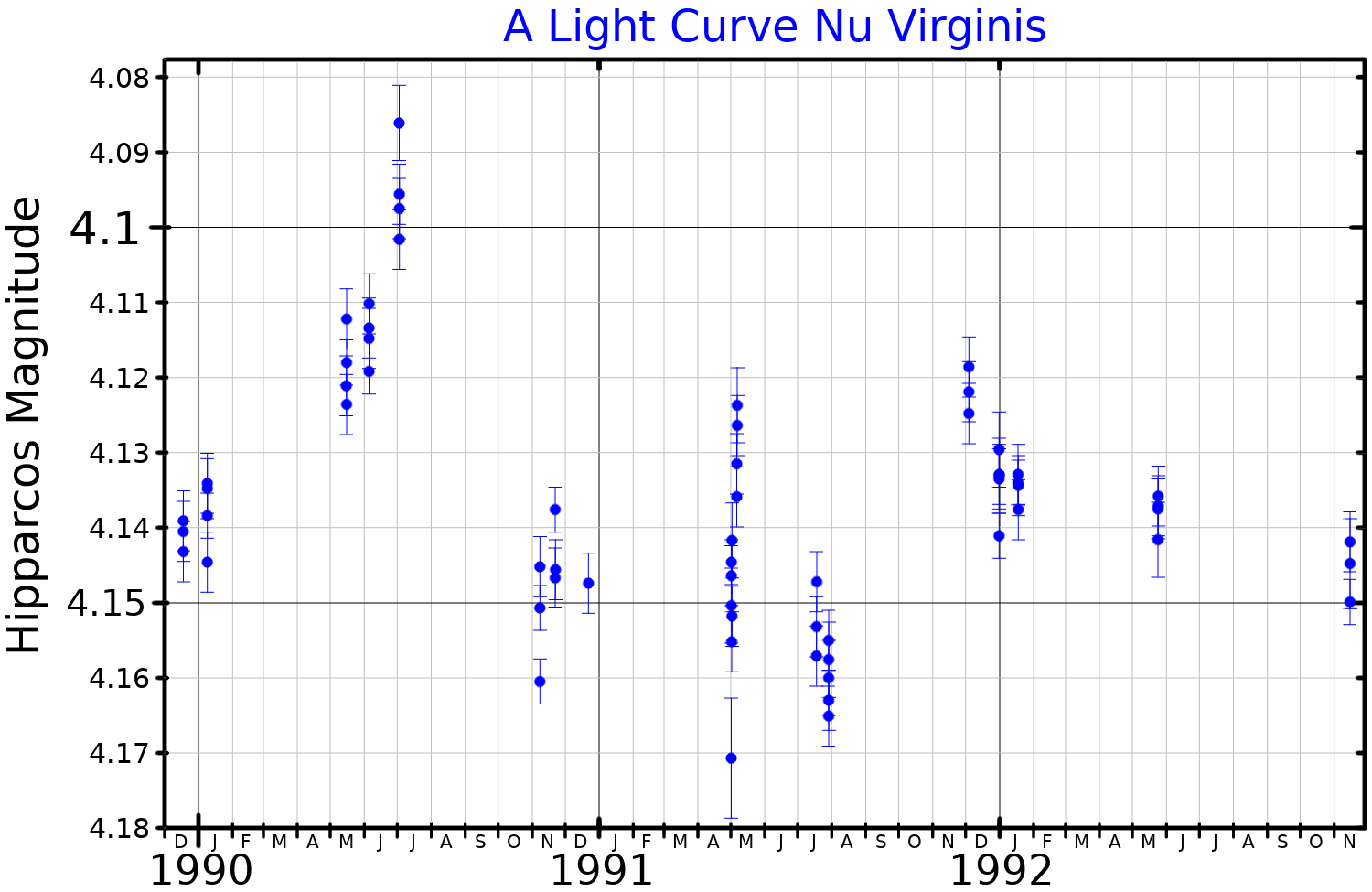Nu Virginis on:
[Wikipedia]
[Google]
[Amazon]
ν Virginis, Latinized as Nu Virginis, is a single star in the  This object is an M-type red giant, currently on the asymptotic giant branch, with a stellar classification of M1 III. It is an SRB-type semiregular
This object is an M-type red giant, currently on the asymptotic giant branch, with a stellar classification of M1 III. It is an SRB-type semiregular
zodiac
The zodiac is a belt-shaped region of the sky that extends approximately 8° north or south (as measured in celestial latitude) of the ecliptic, the apparent path of the Sun across the celestial sphere over the course of the year. The pat ...
constellation of Virgo
Virgo may refer to:
*Virgo (astrology), the sixth astrological sign of the zodiac
* Virgo (constellation), a constellation
*Virgo Cluster, a cluster of galaxies in the constellation Virgo
*Virgo Stellar Stream, remains of a dwarf galaxy
* Virgo Su ...
, located at the western tip of the classic constellation and nearly due south of the prominent star Denebola
Denebola is the second-brightest star in the zodiac constellation of Leo.The two components of the γ Leonis double star, which are unresolved to the naked eye, have a combined magnitude brighter than it. It has the Bayer designatio ...
. It is a red-hued star with an apparent visual magnitude
Apparent magnitude () is a measure of the brightness of a star or other astronomical object observed from Earth. An object's apparent magnitude depends on its intrinsic luminosity, its distance from Earth, and any extinction of the object's lig ...
of 4.04 and can be seen with the naked eye. Because the star lies near the ecliptic
The ecliptic or ecliptic plane is the orbital plane of the Earth around the Sun. From the perspective of an observer on Earth, the Sun's movement around the celestial sphere over the course of a year traces out a path along the ecliptic agains ...
it is subject to occultation
An occultation is an event that occurs when one object is hidden from the observer by another object that passes between them. The term is often used in astronomy, but can also refer to any situation in which an object in the foreground blocks ...
s by the Moon
The Moon is Earth's only natural satellite. It is the fifth largest satellite in the Solar System and the largest and most massive relative to its parent planet, with a diameter about one-quarter that of Earth (comparable to the width of ...
. Parallax measurements provide an estimated distance of around 294 light years from the Sun
The Sun is the star at the center of the Solar System. It is a nearly perfect ball of hot plasma, heated to incandescence by nuclear fusion reactions in its core. The Sun radiates this energy mainly as light, ultraviolet, and infrared radi ...
, and it is drifting further away with a radial velocity of +50 km/s.
 This object is an M-type red giant, currently on the asymptotic giant branch, with a stellar classification of M1 III. It is an SRB-type semiregular
This object is an M-type red giant, currently on the asymptotic giant branch, with a stellar classification of M1 III. It is an SRB-type semiregular variable star
A variable star is a star whose brightness as seen from Earth (its apparent magnitude) changes with time. This variation may be caused by a change in emitted light or by something partly blocking the light, so variable stars are classified as e ...
with its brightness varying by 0.0125 in magnitude. These variations have four periods lasting 11.1, 12.3, 16.8, and 23.7 days. This star has about 1.6 times the mass of the sun, but it has expanded to 54 times the Sun's radius and shines 631 times as brightly as the Sun. The effective temperature of its outer atmosphere is 4,009 K.
References
{{DEFAULTSORT:Nu Virginis M-type giants Asymptotic-giant-branch stars Semiregular variable stars Virgo (constellation) Virginis, Nu Durchmusterung objects Virginis, 003 102212 057380 4517